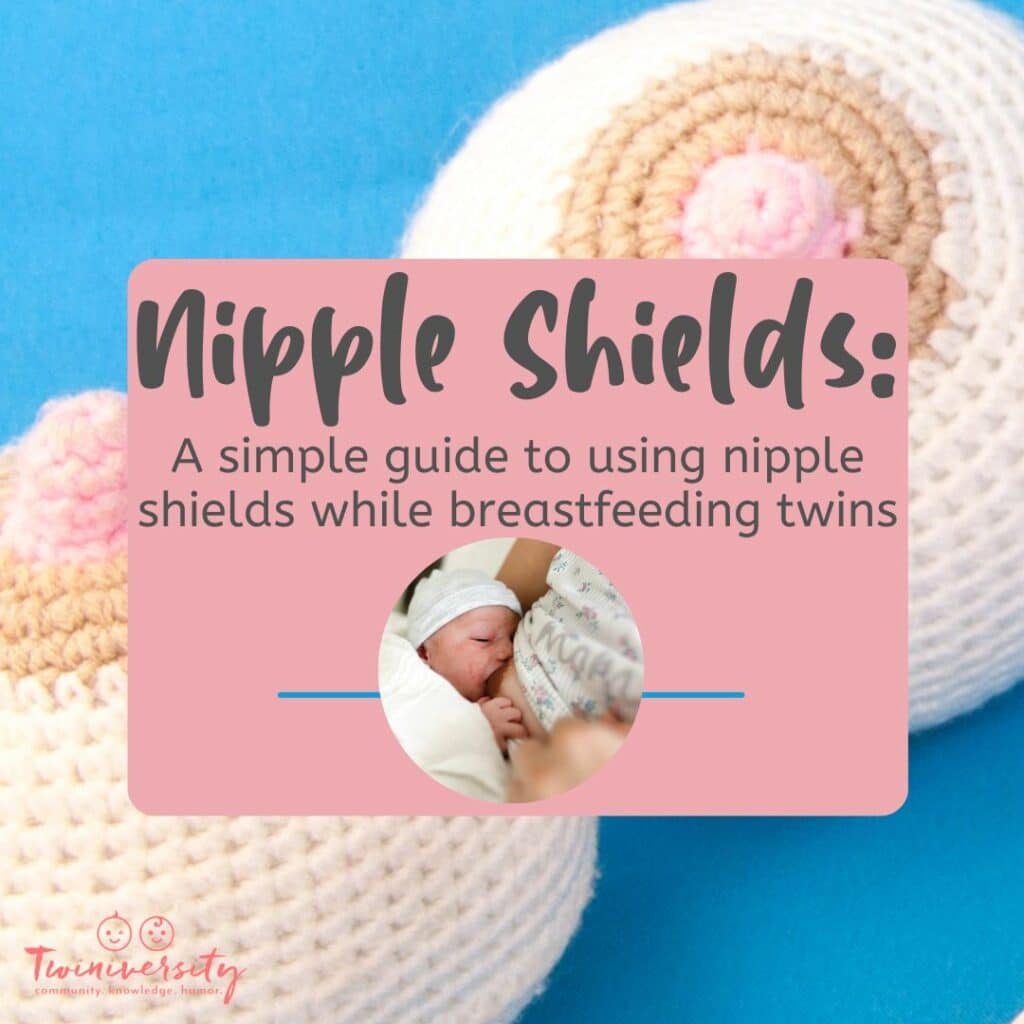Last updated on February 5th, 2024 at 03:21 pm
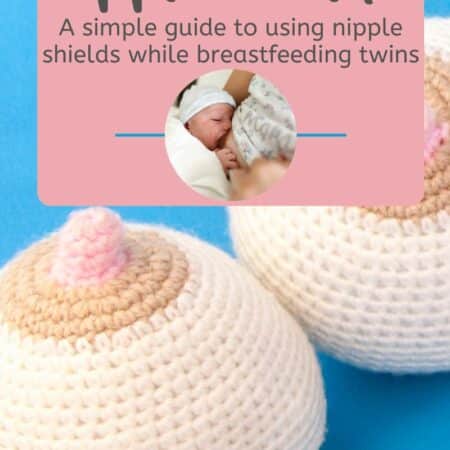
All content on this website, including medical opinions and any other health-related information, is for informational purposes only and should not be considered to be a specific diagnosis or treatment plan for any individual situation. Use of this site and the information contained herein does not create a doctor-patient relationship. Always seek the direct advice of your own doctor in connection with any questions or issues you may have regarding your own health or the health of others.
Before you give birth to your twins, you might see videos online or some pics that demonstrate a mom holding her twins at her breasts in a scene of absolute motherhood paradise. However, not everyone has it so easily. While mother nature may have given most of us the tools we need (our breasts) not everyone has a picture-perfect breastfeeding start and sometimes, sadly, many times, they throw in the towel because of all the challenges breastfeeding may have.
Best case scenario, you’ve taken our Twins Breastfeeding Class or attended one at your local hospital. Better yet, you’ve already met with a lactation consultant in-person or even virtually, but many moms often don’t do any of that and don’t know about all the tools and tips that they have their fingertips (or nipples in this case!) before giving up and going 100% to formula.
There is nothing wrong with formula and supplementing at all, at Twiniversity our goal is to help you have the experience YOU want, no matter what that means or looks like in your home.
As a lactation consultant working almost exclusively with twin families, when I get the very fortunate opportunity to help a family, I always let them know about all the tools they should have at hand when breast or bottle feeding and one of those tools is nipple shields. Many folks haven’t heard of them let alone know how to use them correctly. Today, we put an end to that!
What Are Nipple Shields?
Nipple shields are thin, flexible pieces of silicone that are shaped to thinly cover your areolas and nipples perhaps making your breastfeeding experience easier. They are typically used to create a barrier over sore nipples and or to help shape your nipples making it easier for your baby to have a more secure latch.
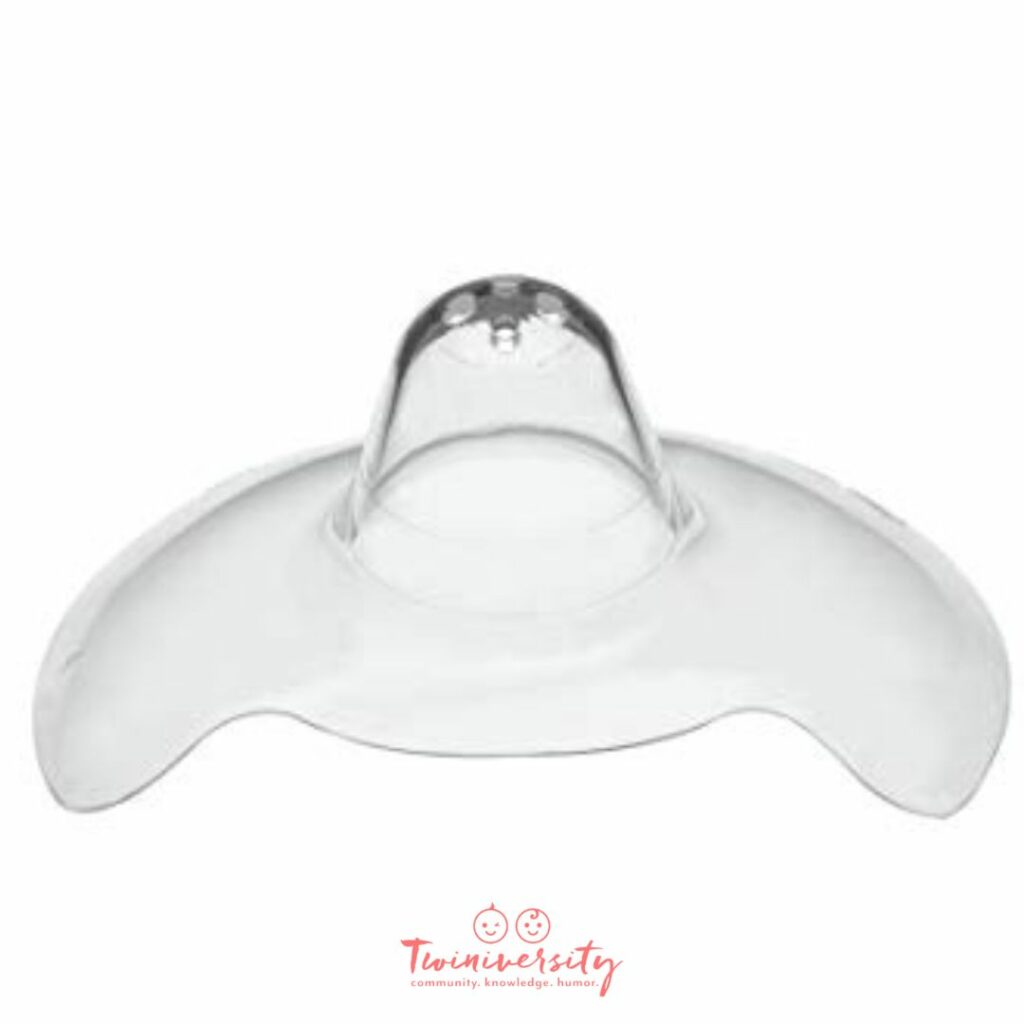
A nipple shield is a common tool for breastfeeding twins. More than half of all twins are born prematurely (before 37 weeks), and the most common issue preemies face when nursing is latching. Nipple shields can help achieve a proper and more secure latch. Breastfeeding two babies at once can be a daunting task but using nipple shields can help make it easier if/when used properly.
When Should You Use a Nipple Shield?
Nipple shields can be used on one or both breasts, and need to be sized similarly to the way you would size the flanges of your breast pump. A nipple shield may be recommended when:
- Your nipples are too short
- Flat or inverted nipples
- Difficulty latching
- Transitioning from bottle to breast
- One or both of your infants are tongue-tied
- General breast refusal
- Sore or cracked nipples
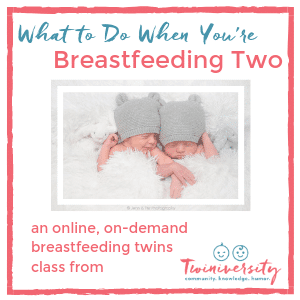
Worried about breastfeeding twins? What To Do When You’re Breastfeeding Two is an on-demand online breastfeeding twins class made just for YOU! This course was created by Twiniversity in partnership with Judy Teibloom-Mishkin, IBCLC. Click here to learn more…
Nipple shields are not designed to be used all the time and should only be used as a short-term solution while breastfeeding. Once you feel comfortable, try removing the nipple shield halfway through a feeding, typically when you are pausing to burp your baby and see how your baby responds. If you feel uncomfortable without it, put it back on but try often to remove it from your breastfeeding twins’ experience.
How to Use Nipple Shields
- Start by washing your hands with warm water and soap.
- Take one sanitized shield in your hand and following that specific manufactures directions, place it over each nipple, making sure to cover the entire areola area, and will stay securely in place. (if not secure, express a little breastmilk and use it to coat the shield which may make it stay in place better.)
- Breastfeed one baby at a time at first when using nipple shields.
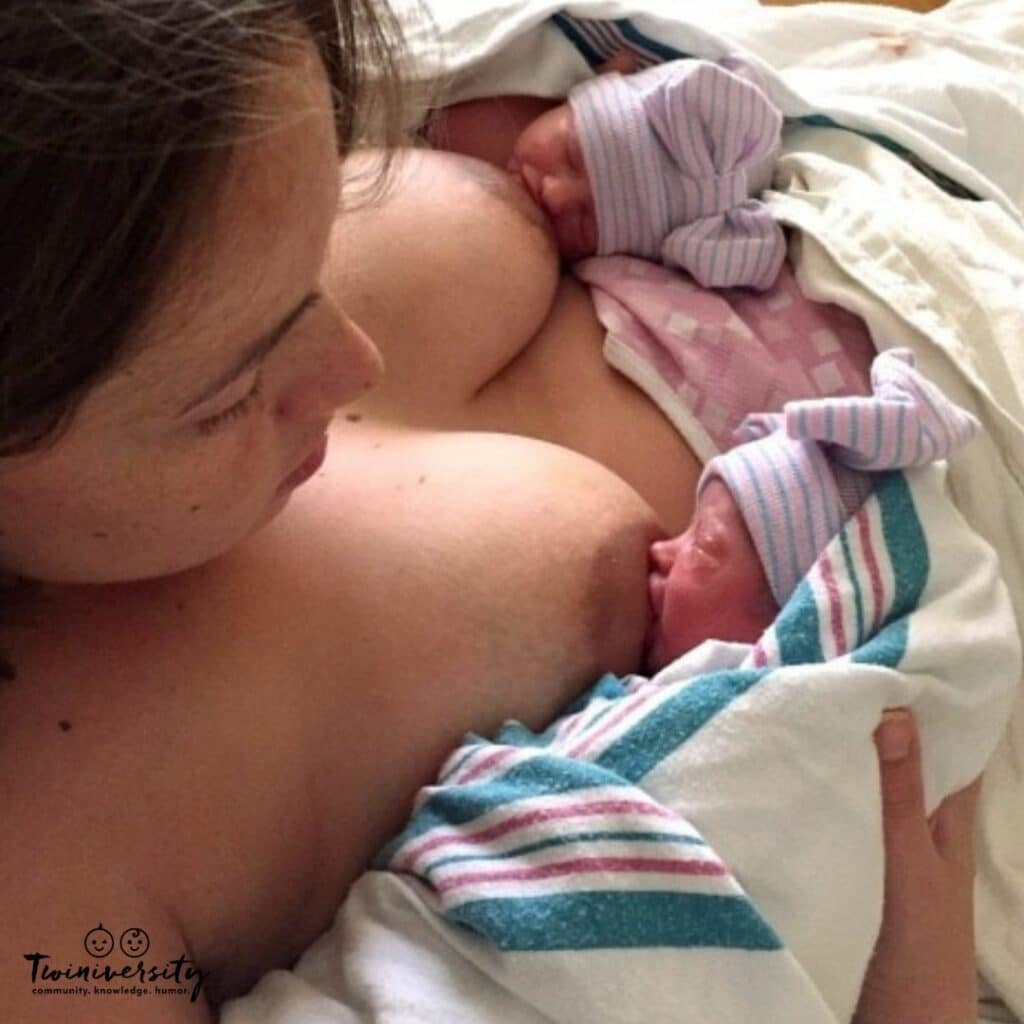
4. When latching your baby when using a shield, after placing your shield, hold it (typically with your index and middle finger forming a “V” and placing one finger above and one below securing the shield) with one hand and your other arm and hand supporting your baby’s head and body. Try expressing a few drops of breast milk onto the nipple shields before latching your baby. This will help stimulate the babies’ rooting reflex and can make latching easier.
5. Once your baby is latched on, keep an eye on the shield to make sure it’s always in the correct position. Your baby should have a latch similar to what they should have without a shield. A nipple shield is a tool that will help you transition to breastfeeding without one and a subpar latch should not be accepted. If you feel any discomfort or pain, stop, remove your baby from your breast, and try again.
6. After feeding, take off the nipple shields. To remove the shield, place your finger in the corner of the shield and gently pull it off and put it in a secure place. Because they are often translucent, beware of where you place them because they could be hard to find later. We often recommend that you keep the nipple shield container that they came in handy and place them back in there.
7. Wash nipple shields after every use according to manufactures directions. Store the shields in a clean, dry container away from direct sunlight and heat. Replace the shields every 6-8 weeks unless otherwise directed.

Need some twin parent friends? Get the support you need with a Twiniversity Membership. Benefits include a monthly twin parent club meeting on Zoom, access to a private Facebook group just for twin parents, and a video library of twin parenting lessons. Visit Twiniversity.com/membership to join today!
Are Nipple Shields One-Size-Fits-All?
The quick short answer is, no.
When it comes to using nipple shields for breastfeeding, it’s important that you select the right size.
You want a nipple shield that fits your nipples snugly, but not too tight. If it is too tight, it could cause discomfort and interfere with milk flow and if it’s too loose it can un-attach easily. Your nipple shield should also cover the entire areola so that your baby can latch on properly.
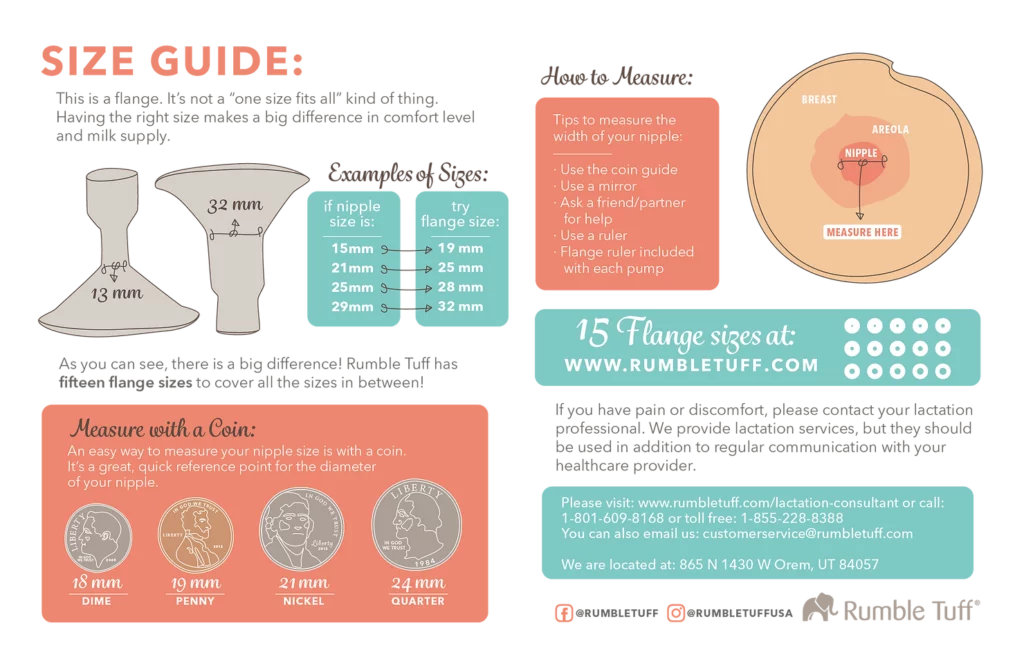
Measuring Your Nipple Shield
Before getting discharged from the hospital, the folks here at Twiniversity would LOVE it if you spoke with their in-house lactation consultant to ensure you have the proper size.
What Are Flat Nipples?
Flat nipples are nipples that don’t protrude and can make it difficult for a baby to latch on. Nipple shields can help with this issue since they provide extra shaping, making it easier for your baby to latch on. If you have flat nipples and are having difficulty getting your baby to latch on, it’s best to consult with a lactation consultant who can help you find the right solutions for your situation.
Do Nipple Shields Cause Sore Nipples?
Nipple shields can cause sore nipples if they are not sized or used correctly. It’s important to make sure that the shield is the correct size and properly latched on before beginning to feed. Additionally, it’s important to take breaks from using a nipple shield if you start to experience any discomfort or irritation.
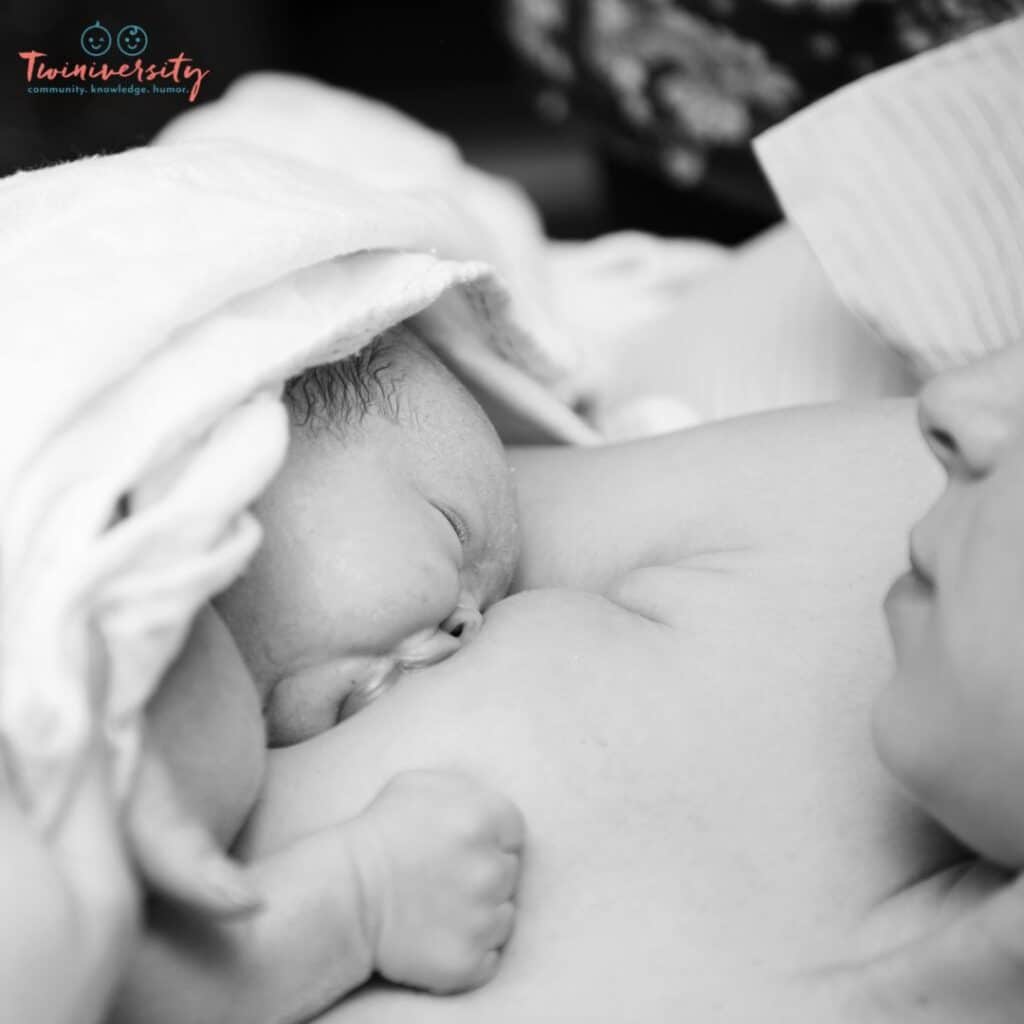
Will Nipple Shields Help With My Milk Supply?
Nipple shields can help with milk supply in some cases because it simply provides more comfort for you and will allow you to have your baby to breast more often. Remember, they are not intended for long-term use.
If you are concerned about milk supply you can weigh your baby before and after feeding to see how much they have gained during that feed or you can express some breastmilk with your pump to check your production. BUT always know that your baby typically is more efficient and can/will help you produce more milk If you are still concerned, it’s best to consult your pediatrician or lactation consultant for advice.
Word to the Wise About Using Nipple Shields When Breastfeeding Twins
Breastfeeding twins is HARD WORK, but should not be anything that should scare or freak you out. We’ve worked with LITERALLY thousands of twin families. Out of all the families I’ve personally worked with, I always recommend they have nipple shields on hand. We don’t always use them, but I tell folks to grab some, keep them in their original packaging, and open them when necessary. If you don’t use ’em, you can return ’em! Out of all the shields out there, I typically recommend Dr. Brown’s Nipple Shields. I like them because they have shields that have the most amount of openings at the end which will make more milk come out with each sip.
YOU CAN DO THIS!!!! I promise! If you need help, we are here now and always. If you want to breastfeed part-time or full-time, at the breast or exclusively pump, we got ya covered. When breastfeeding twins, we are the go-to experts and our team is on call to help you whenever you need us. Consider us the Batgirls of Breastfeeding! You throw that signal in the sky and we will be there to help!
Some other resources you shouldn’t miss when it comes to breastfeeding twins are:
The ABC’s – Twin Z’s: A Twin Breastfeeding Pillow Roundup
Breastfeeding Twins: A Step-By-Step Guide for New Twin Moms
The Struggles and Triumphs of Breastfeeding Twins
5 Tips to Get Ready for Breastfeeding Twins
My Twins Breastfeeding Journey: From NICU Pumper to Exclusive Breastfeeder

